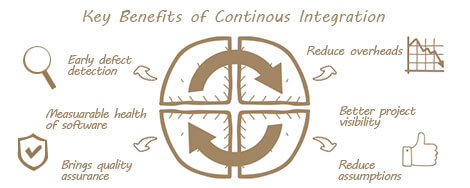As technology advance and more people weave it seamlessly into their daily life, there needs to be a change in how the software applications function and how they’re produced and tested. Today, customers and industry demand perfection. Therefore, it has become important for companies to make sure that they deliver effective and competitive services and products at all times.
Continuous Integration/Testing
The constant software releases and version updates has led to continuous development. Therefore it is important that testing be treated as a continuous process. Companies need to work diligently from the outset to assess, measure and improve processes and performance throughout every stage of development.
Benefits of Continuous Integration
- Defects are detected and fixed sooner – Integrating testing throughout the development process would give QA teams more time to find bugs and help prevent bugs from effecting later code.
- Health of software is measurable — By establishing continuous testing into the automated integration process, the software health attributes such as complexity can be tracked over time.
- Reduce assumptions — Continuous Integration gives the chance to replace assumptions with knowledge thereby eliminating all cross-platform errors at the development stage.
- Reduce overheads – Finding a bug at the development stage is the cheapest possible way to find it. If the same bug was to be fixed in any other environment, it would cost more. Setting up a CI system may cost an overhead, but will outweigh the man-hours saved along the way.
- Brings quality assurance — This is the biggest benefit from a client perspective, continuous integration can enable you to release deployable software at any point in time. In the absence of CI, projects are prone to delayed releases because of unforeseen issues which arise from deployment.
- Enables better project visibility — Since integration occur frequently, it provides the opportunity to notice trends and make informed decisions. Noticing trends in build success or failure, overall quality becomes possible. With CI, you can access real-time data on the code quality metrics to innovate new improvements and support decisions. It also offers the ability to generate API-like documentation for all committed code, making the software architecture immediately visible to new developers and other team members
Continuous Integration is becoming a more vital component to successful software development as it helps break down the barriers between customers and development. There is frequent deployment which allows users to get new features more rapidly and provide feedback on those features, thereby making it a more collaborative development process.








